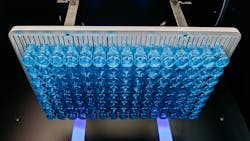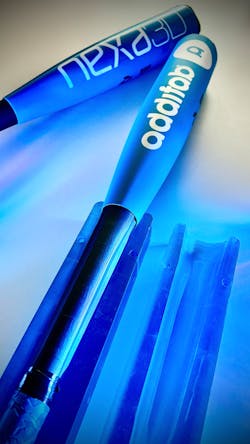Advancing Sustainability in 3D Printing
Sustainability is a crucial consideration in today’s design and manufacturing spaces, and there is potential for 3D printing technology to contribute to a greener future.
Glen Mason, manager of advanced innovation and industrialization at DeMarini, a division of Wilson Sporting Goods, and Lasse Staal, business development director of Nexa3D, spoke with Machine Design about additive manufacturing for the sporting goods space, and the discussion moved to sustainability.
Reducing Waste and Material Consumption
One of the significant advantages of 3D printing lies in its ability to minimize waste and reduce material consumption. Traditional manufacturing processes often entail building multiple tools, which results in significant material and cost investments. Mason says that 3D printing allows for iterative testing and design modifications without the need for extensive tooling.
He notes that by using a digital workflow and 3D printing, designs can be created and tested with minimal material consumption, avoiding the need for expensive traditional tooling workflows. The digital workflow also allows for easy exploration of alternative materials, which promotes lower carbon footprints and better circularity.
WATCH: Is Free-Form Injection Molding Sustainable?
Reduce Carbon Footprint, Move Toward Circular Economy
By replacing conventional pilot tooling with free-form injection molding, Staal says they can reduce emissions by as much as 75%, noting a third-party study by Deloitte. More efficient iterations avoid the need for wasteful practices, leading to energy, materials and cost savings.
This technology also impacts spare parts manufacturing. In industries where on-demand batches of one are required for spare parts, it is important to have a manufacturing system that allows for consistent production in the same material and process as the original part. With free-from injection molding, spare parts can be made using the same material and process, extending the lifetime of products while reducing costs and risks.
READ MORE: ASME Honors Additive Manufacturing Innovation
Shift Mindsets, Maximize Sustainability
There is a need to shift our mindsets and the industry needs to adopt greener practices. By moving away from preconceived notions tied to traditional manufacturing processes, companies can fully leverage the advantages of 3D printing, contributing to a sustainable and more environmentally conscious future. “The obstacle is the mindset, really, of the people involved. So, I think that's where I would like to see the most effort going into greening up our workflow here,” Mason says.
About the Author
Sharon Spielman
Technical Editor, Machine Design
As Machine Design’s technical editor, Sharon Spielman produces content for the brand’s focus audience—design and multidisciplinary engineers. Her beat includes 3D printing/CAD; mechanical and motion systems, with an emphasis on pneumatics and linear motion; automation; robotics; and CNC machining.
Spielman has more than three decades of experience as a writer and editor for a range of B2B brands, including those that cover machine design; electrical design and manufacturing; interconnection technology; food and beverage manufacturing; process heating and cooling; finishing; and package converting.
Email: [email protected]
LinkedIn: @sharonspielman
Facebook: Machine Design
YouTube: @MachineDesign-EBM


